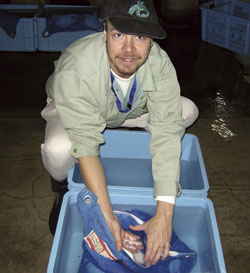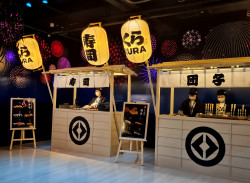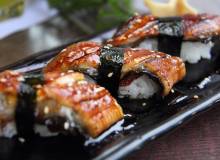
March 23, 2009
Philip Harper
The first non-Japanese master sake brewer is optimistic about the future of nihonshu
By Metropolis
Originally published on metropolis.co.jp on March 2009

Photos courtesy of Philip Harper
Of course, it’s not surprising that Harper exhibits such strong feelings. As the first non-Japanese to earn the rank of toji, or master brewer, he’s put almost two decades of work into learning everything about sake.
Originally from Cornwall, Harper came to Japan as an ALT back in 1988. A brush with good sake and the social rituals of drinking it convinced him that nihonshu was something he wanted to know more about. He eventually ended up working in a sake bar in Osaka and then as an apprentice in a brewery in Nara. Slowly making his way up the ranks—and toughing it out despite the difficult physical labor, injuries and lack of sleep—he won certification as a toji by the Nanbu Brewers Union and was hired as the head of Tamagawa last year.
Harper’s day starts at 8am, checking the fermenting mash and yeast starter. Then he moves on to the culture room, where koji, the mold used to break down the starches in the rice, is cultivated. Mashing takes up the rest of the morning, then the rice to be used the following day is washed in the afternoon. Everything else, like pressing and dealing with curious reporters, gets done in-between. And the koji has to be checked during the night as well, so Harper gets very few full nights of sleep between autumn and spring.
Despite the demanding schedule, he has hit the ground running at Tamagawa, which produces premium sake varieties like junmai-shu and an award-winning daigin-jo. Since Harper joined the brewery, sales have expanded across Japan, and there are plans to start selling in the US later in the year. Tamagawa is even having trouble meeting demand. “There are a wide range of styles we haven’t managed to get up on the website because they keep selling out,” Harper says.

This is even more impressive considering that sake no longer enjoys the pride of place it once did in Japan. Though consumption is on the rise overseas, with exports hitting a record high of 11,334 kiloliters in 2007, domestic popularity has been on a steep decline. According to finance ministry figures, Japanese are drinking only a third of the sake they were 30 years ago. This decline seems to be due largely to changing tastes and the perception that it’s an older person’s drink. What the industry needs, according to Harper, is a PR push, and he himself has been on the front line.
In addition to writing two popular books, The Insider’s Guide to Sake and The Book of Sake: A Connoisseur’s Guide, Harper has contributed to The Japan Times, been interviewed by numerous Japanese and foreign publications, and held many book signings and sake tastings.
Despite the decline in market share, Harper says the sake industry has lost nothing where quality is concerned. “So many people are brewing at the top of their games right now,” he says. “In terms of quality, there’s plenty of good stuff out there. The problem is getting people to try it in the first place… I’m convinced that if I took 100 people through a tasting, 80 or 90 of them would leave there as fans.”
So what’s a novice who can’t make it to Kumihama to do? “The best way to learn about sake,” Harper advises, “is to find a retailer or a restaurant or a bar where people will talk to you.” Gaining an appreciation of sake is really about getting out there and finding what you like through trial and error, which isn’t such a hard thing to do. As Harper puts it, “At the end of the day, it’s about drinking.”
For more information about the Tamagawa brewery or to buy its sake online, see www.sake-tamagawa.com.
Tamagawa sake is also available at liquor shops Hasegawa (2-2-7 Azabu-Juban, Minato-ku. Open daily. Nearest stn: Azabu-Juban. www.hasegawasaketen.com) and Asahiya (1-14-13 Akatsutsumi, Setagaya-ku. Closed Wed. Nearest stn: Gotokuji or Yamashita. http://tinyurl.com/asahiya)
Harper will be attending an event at the Foreign Correspondents’ Club of Japan held by the Bimaibishubi Shoku Club, a group of sake brewers, rice producers and restaurants. Tickets are ¥6,000, including dinner. For more information, contact the FCCJ at 03-3211-3161.







